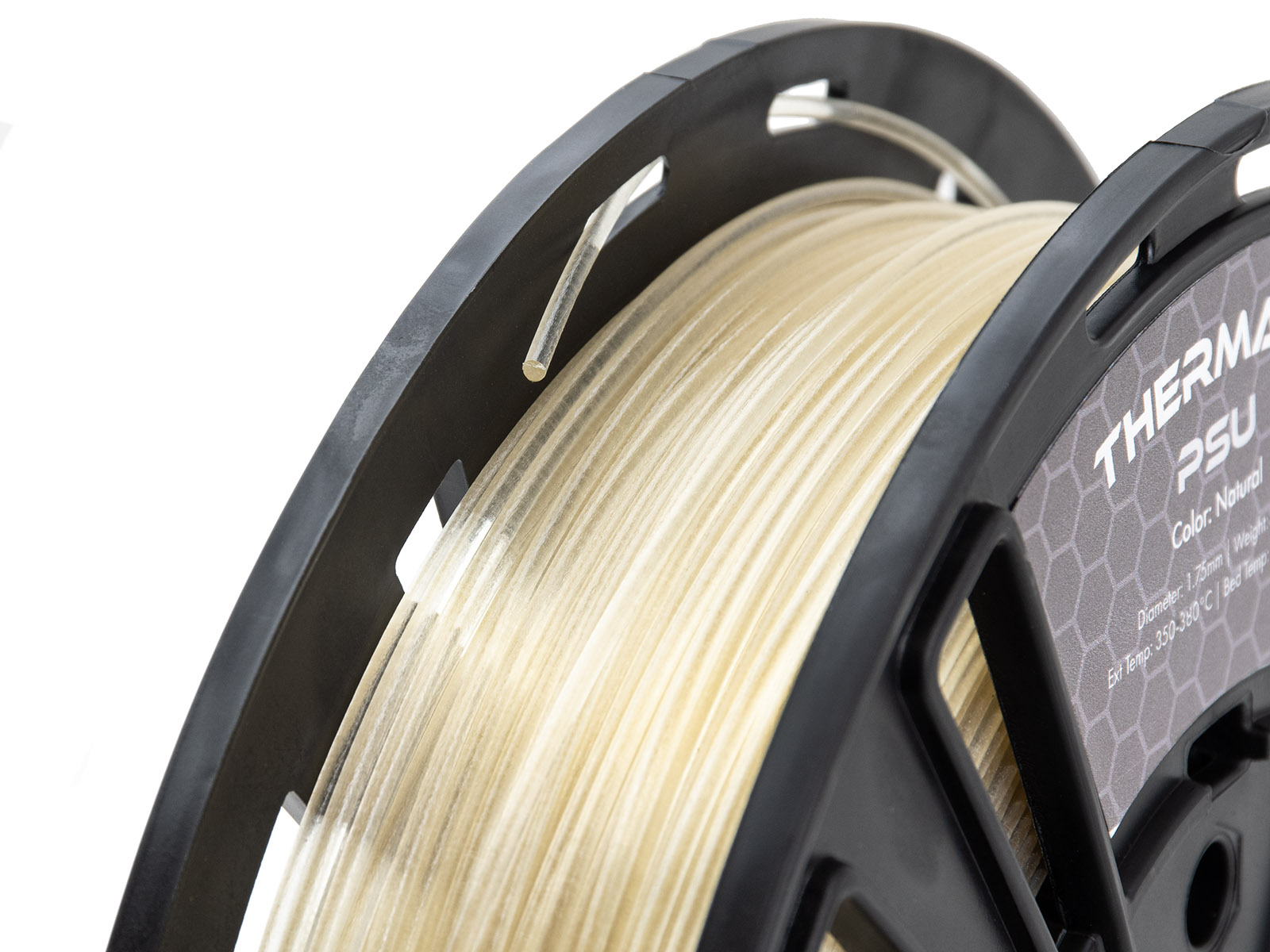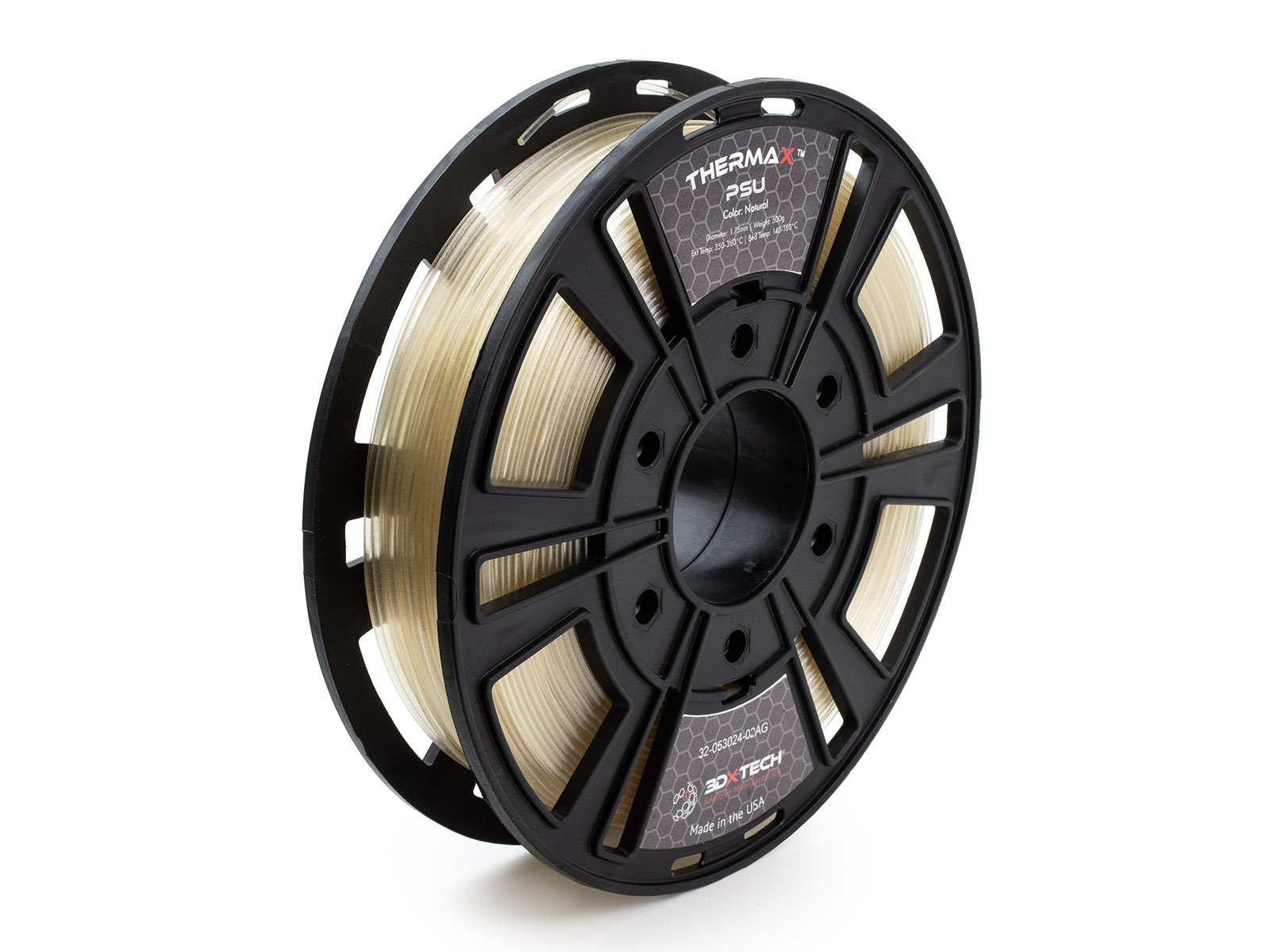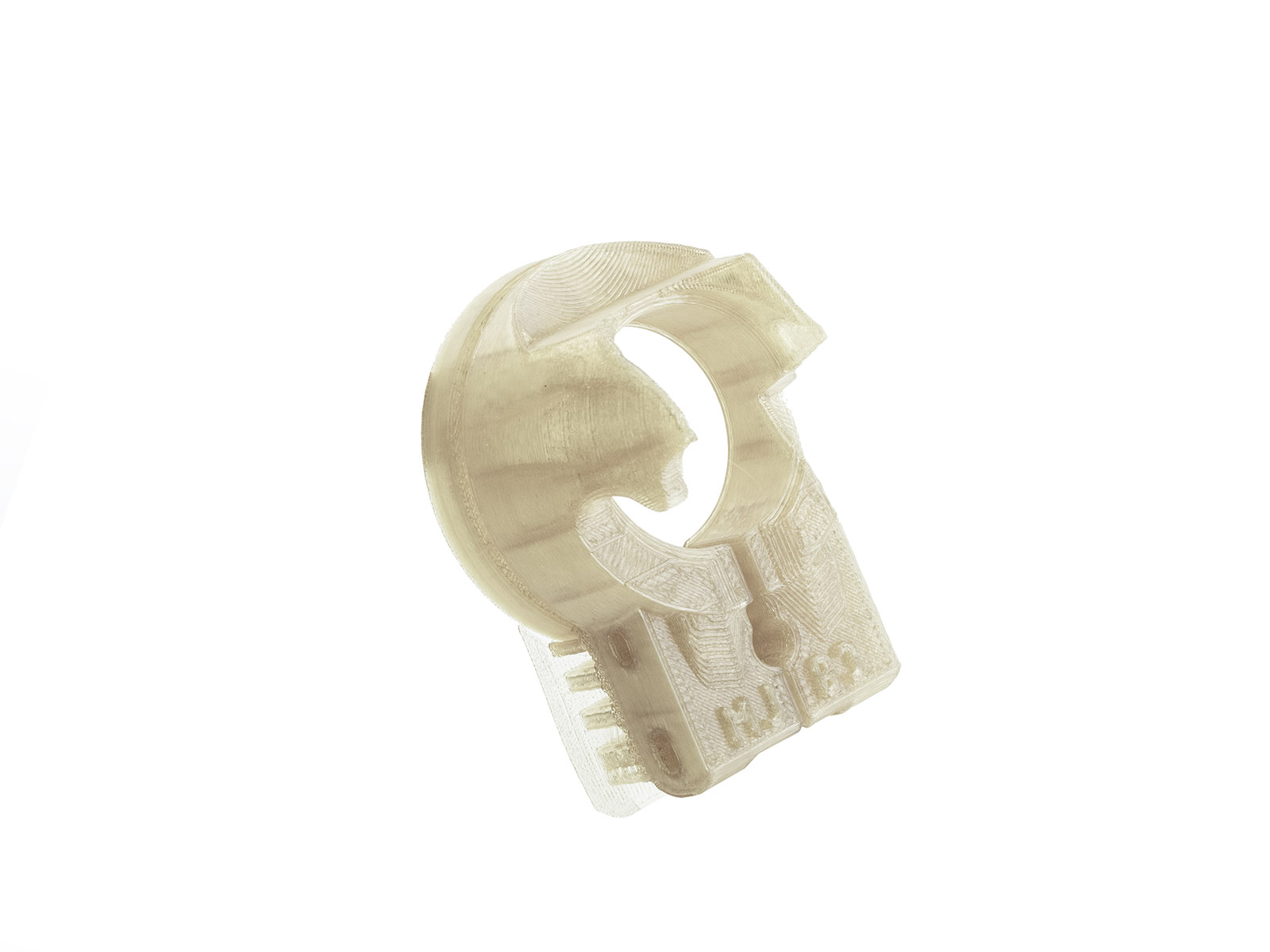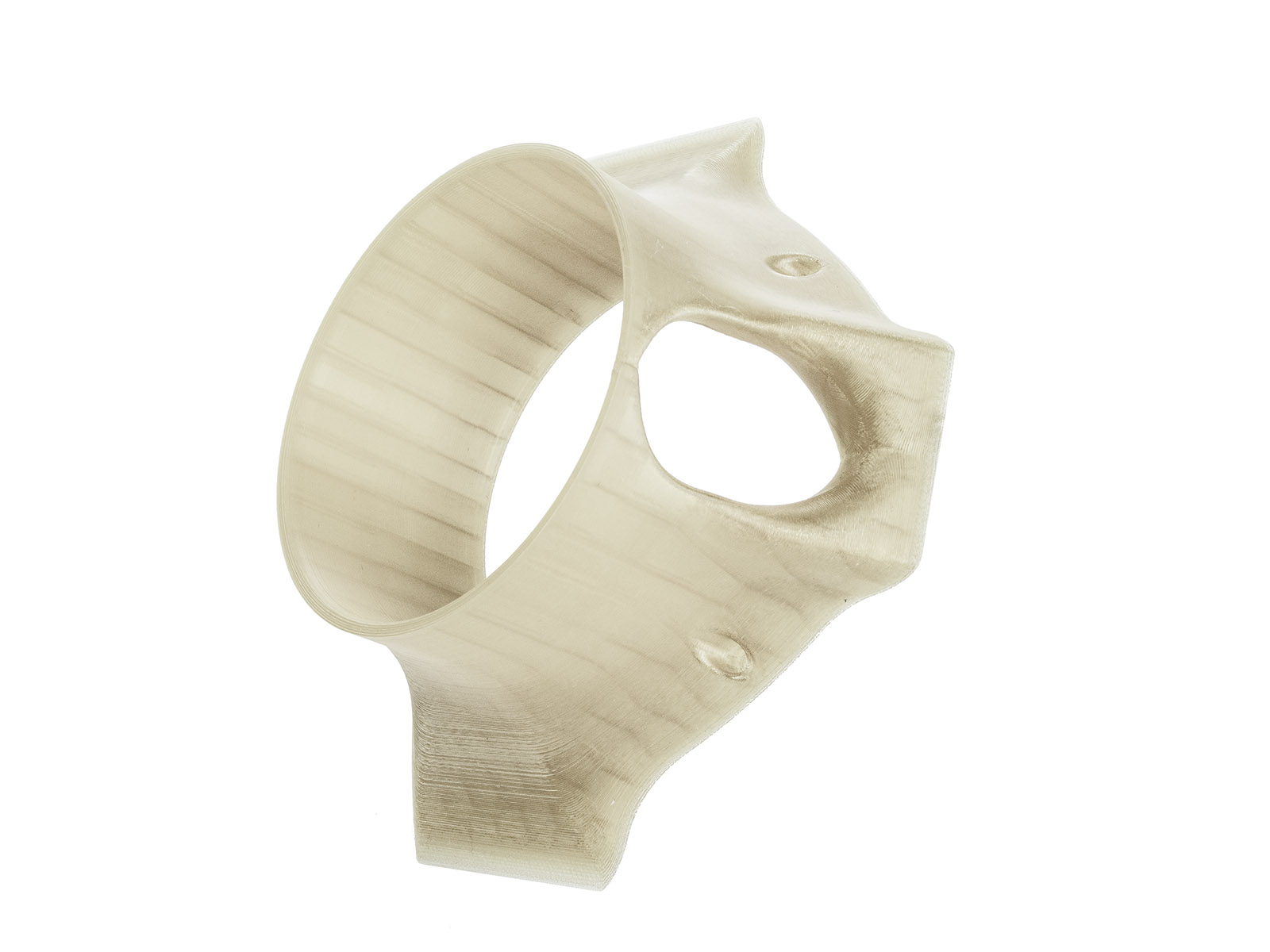PSU, or Polysulfone, is a technical thermoplastic material with an excellent combination of properties that make it suitable for various applications including 3D printing. Its high resistance to temperature, chemicals, and mechanical stresses ensures reliability and performance in demanding conditions.
This material has excellent mechanical properties such as high strength, toughness, and wear resistance, making it an ideal choice for applications requiring high creep resistance and suitability for high continuous service temperatures alongside the usual requirements of high mechanical stability and stiffness.
PSU is an excellent alternative to ULTEM 9085. While having a lower cost per kilogram and lower density (giving you more filament per kilogram), it maintains superior thermal properties. Its higher glass transition temperatures and heat deflection temperature give it higher strength and stiffness at elevated temperatures.
Recommended nozzle temperature: 360 - 400°C
Recommended bed temperature: 140 - 155°C
|
Pros |
Cons |
|---|---|
|
✔ Excellent temperature resistance |
✖ Prone to warping |
|
✔ Good chemical resistance |
✖ Requires drying |
|
✔ Resistance to radiation |
✖ Requires adhesives to increase adhesion to the |
|
✔ Possibility of sterilization |
✖ Removing supports can be difficult |
| ✔ Self-extinguishing material |
|
| ✔ Dimensional stability during printing |
|
Best use
Sterilized and chemically resistant components in medicine - packaging, surgical instruments, pipes, valves. Also connectors, relays, aircraft, and shuttle components.
Tips for successful printing
It is essential to keep the filament dry, otherwise its mechanical properties will deteriorate significantly. Even though the PSU absorbs little moisture, we recommend drying the filament at 110°C for at least 4 hours before printing and then using a dry box. Printing this material requires a closed and heated chamber with a minimum temperature of 65 °C.
Heated chamber
An actively heated chamber is necessary to print this material with a temperature of 65°C or higher. A heated chamber is essential for printing high-temperature materials in FFF, due to several reasons:
- Prevents deformation: Maintains stable temperatures to reduce deformation and cracking.
- Improves layer adhesion: Supports stronger connections between layers.
- Preserves the properties of the material: Ensures proper crystallization and strength of the material.
- Prevents clogging: Prevents premature cooling of fibers and prevents problems with extrusion.
- Improves accuracy: Reduces thermal expansion and improves dimensional accuracy.
Print surface preparation
For printing, a special adhesive must be applied to the print bed (e.g., MAGIGOO HT) for the perfect first layer. We recommend using the adhesive in multiple layers.
Samples
 |  |
 |  |